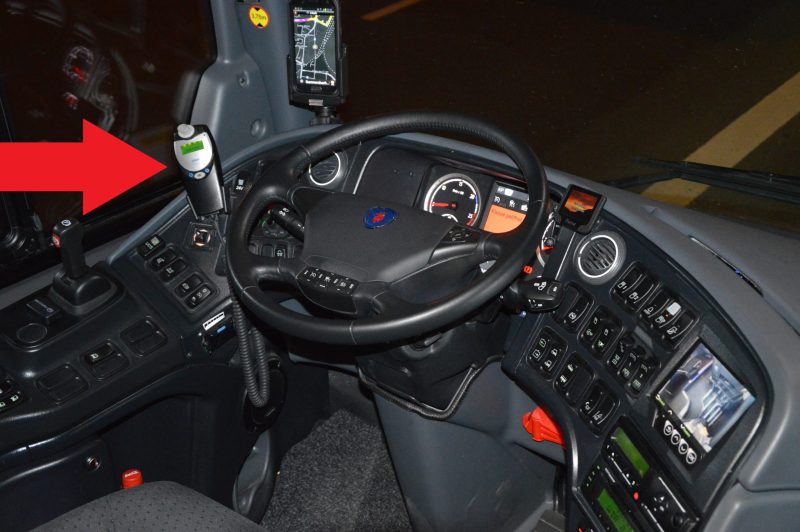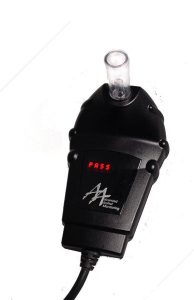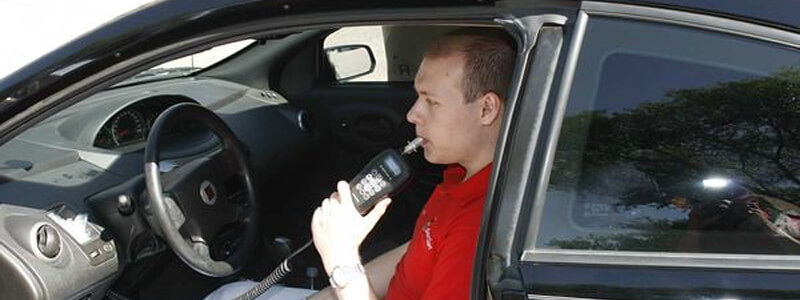Driving under the influence (DUI) is a serious crime that can have life-altering consequences. In many states, DUI offenders are required to install an ignition interlock device (IID) in their vehicle. These devices are designed to prevent the vehicle from starting if the driver has been drinking alcohol. While some may view the IID as a punishment, others see it as a lifeline. By preventing the driver from getting behind the wheel while under the influence of alcohol, these devices can help save lives and prevent future DUI offenses. In this blog post, we will explore the benefits of ignition interlock devices, how they work, and why they are a crucial component of the DUI offender’s path to recovery and rehabilitation.
What is an ignition interlock device?
An ignition interlock device (IID) is a small, breathalyzer-like device that is installed in the vehicle of a DUI offender. It works as a powerful tool to prevent drunk driving incidents by creating a barrier between the driver and the ignition system of the vehicle.

The device is connected to the vehicle’s ignition system and requires the driver to provide a breath sample before starting the engine. The purpose of this breath sample is to measure the driver’s blood alcohol concentration (BAC) level. If the BAC level exceeds a pre-set limit, typically 0.02% or 0.04%, the device will prevent the engine from starting.
To ensure accuracy and prevent tampering, the IID incorporates advanced technology, including fuel cell sensors or infrared spectrometry, to detect and measure alcohol in the breath sample. These sensors are highly sensitive and can differentiate between alcohol and other substances, such as mouthwash or medications, to prevent false positives.
Once the engine is running, the device will prompt the driver to provide additional breath samples at random intervals. This feature prevents individuals from having someone else provide a clean breath sample to start the vehicle and then consume alcohol afterward.
In addition to the breath sample requirements, most ignition interlock devices also have a rolling retest feature. This means that while the vehicle is in motion, the driver will be prompted to provide breath samples at random intervals. This ensures that the driver remains sober throughout the entire duration of the journey.
So, how does an ignition interlock device actually work?
The device is connected to the vehicle’s ignition system and requires the driver to provide a breath sample before starting the engine. This breath sample is analyzed for the presence of alcohol. If the breath sample exceeds the pre-set limit, usually a low level such as 0.02%, the device will prevent the engine from starting. On the other hand, if the breath sample is within the acceptable range, the vehicle can be started normally.
But the functionality of an ignition interlock device doesn’t end there. Once the engine is running, the device requires additional breath samples at regular intervals. These random retests are designed to ensure that the driver remains alcohol-free throughout the duration of the journey. The driver is prompted to provide a breath sample by a signal, usually a tone, and they have a limited amount of time to provide the sample. This ensures that the driver cannot circumvent the system by having someone else provide the initial breath sample.
The device also incorporates advanced anti-tampering features to ensure its integrity. For instance, it may have a camera to capture images of the person providing the breath sample or may require the driver to hum into the device to prevent the use of mouthwash or other tricks to bypass the system.
Benefits of ignition interlock devices for DUI offenders
Ignition interlock devices (IIDs) have emerged as a lifeline for DUI offenders, offering numerous benefits that not only ensure public safety but also aid in the rehabilitation and reintegration of these individuals into society.
- Prevents drunk driving: The primary benefit of IIDs is their ability to prevent drunk driving incidents. These devices are installed in the vehicles of DUI offenders and require the driver to pass a breathalyzer test before starting the engine. If alcohol is detected, the vehicle will not start, effectively preventing the individual from operating the vehicle while under the influence.
- Promotes responsible behavior: By requiring DUI offenders to use an IID, it promotes responsible behavior and serves as a constant reminder of the consequences of drunk driving. Knowing that their actions are being monitored encourages individuals to think twice before consuming alcohol and getting behind the wheel.
- Rehabilitation and monitoring: IIDs play a crucial role in the rehabilitation process of DUI offenders. They provide a mechanism for monitoring the individual’s compliance with sobriety requirements and can be used as evidence of their commitment to changing their behavior. This monitoring aspect creates a sense of accountability and helps offenders stay on the path toward sobriety.
- License reinstatement: In many jurisdictions, installation of an IID is a requirement for license reinstatement following a DUI conviction. By complying with this requirement and successfully completing the required period of IID usage, offenders can regain their driving privileges sooner. This not only benefits the individual but also allows them to resume their daily activities, such as commuting to work, attending appointments, and taking care of their families.
- Public safety: The use of IIDs significantly reduces the risk of repeat DUI offenses. Studies have shown that jurisdictions that have implemented IID programs have experienced a decline in drunk driving incidents and related accidents. This not only protects the DUI offenders themselves but also safeguards other road users, pedestrians, and innocent lives that could be affected by impaired driving.
Ignition Interlock Device Legal Arguments
For a variety of reasons, ignition interlock devices (IIDs) have long been a subject of concern. The majority of the center of the discussion is on whether or not these technologies are useful. Another point of contention is the long-term implications of using these gadgets and cars, both the advantages and disadvantages. The arguments on both sides are reviewed and weighed against their benefits and drawbacks in order to reach the best judgment possible based on all of the information.

Since they were originally placed in vehicles, IIDs have earned both praise and criticism. The positive feedback significantly outnumbers the negative feedback. These gadgets have helped to reduce the number of drunk drivers on the road while also discouraging repeat DUI offenders from committing another violation. The mechanisms serve as a supplement to DUI enforcement, keeping people from hurting themselves or others on the road. Given the statistics indicating the clear benefits of IIDs, some have attempted to adopt the devices on a more permanent and court-ordered basis.
IIDs are typically used as an alternative to sentencing or when a repeat offender is captured. Several legislators are pushing to change this by joining other states in permanently implanting the devices on persons accused of DUI, regardless of their criminal past. They believe that using this device on a car for at least 5 months can cause the driver to establish the habit of always driving sober, even after the gadget is removed. They are aiming to pass legislation in their respective states mandating the installation of IIDs in the vehicles of all those convicted of drunk driving based on this argument. The public, on the other hand, claims that passing such a bill would preclude a judge from selecting how to sanction the individual accused with the infraction based on the nature of the offense.
That is, the judge would be unable to discriminate between a person who appears to be a belligerent drunk and one who simply took an additional sip of a drink that day and sentence the latter. Those who support the law, on the other hand, contend that the BAC reading is taken from their offense, as is the police record, and that they can submit these to a judge. They can use that information to estimate how long it will take to install the device on the car. Those in favor of such legislation and court-ordered device installation appear to have a much more planned and well-prepared case to support their position.
Some states currently require the installation of a device within a particular time frame after being charged with drunk driving. The Ignition Interlock Device looks to be a highly effective means of reducing the number of intoxicated drivers on the road for the most part. In reaction to the data, more states are making these devices mandatory for DUI offenders, and more are expected to follow suit in the future.
Ignition Interlock Purpose Explained
Ignition interlock devices have emerged as a crucial tool in reducing recidivism rates among DUI offenders. These devices, often referred to as a lifeline for those battling with alcohol-related offenses, have proven to be highly effective in preventing repeat offenses and promoting safer roads.
The impact of ignition interlock devices on recidivism rates is undeniable. By requiring DUI offenders to install these devices in their vehicles, it ensures that they are unable to start their car if their blood alcohol concentration (BAC) exceeds a predetermined limit. This proactive measure acts as a powerful deterrent, discouraging individuals from getting behind the wheel while under the influence.
Studies have consistently shown that ignition interlock devices significantly reduce repeat offenses. Research conducted by the Centers for Disease Control and Prevention (CDC) found that these devices led to a 70% reduction in DUI recidivism rates. This statistic alone underscores the importance of implementing this technology as a means to protect both DUI offenders and the general public.
Also, See Top 10 Best Houston DUI Attorneys
The effectiveness of ignition interlock devices lies not only in their ability to prevent intoxicated driving but also in their role as rehabilitation tools. These devices offer a level of accountability for DUI offenders, allowing them to regain their driving privileges while simultaneously monitoring their behavior. The data collected from these devices can be used to assess an individual’s compliance with sobriety and provide valuable insights for treatment and counseling programs.

Ignition interlock devices provide a sense of empowerment to DUI offenders. Rather than facing a lengthy license suspension or complete revocation, these devices offer a more lenient alternative. This, in turn, enables individuals to maintain their employment, support their families, and actively participate in society while adhering to strict sobriety guidelines.
FAQs on Ignition Interlock
Can you put an interlock in a leased car?
Yes, you can install an Ignition Interlock Device (IID) into a leased car. It is a legal requirement in many states, including Texas, that any person convicted of a DUI or DWI install an IID into their vehicle. If the vehicle is leased, it is the responsibility of the leaseholder to comply with this law.
What is the purpose of an Ignition Interlock Device?
An Ignition Interlock Device requires the driver to provide a breath sample before being able to start the vehicle. If alcohol is detected, the vehicle will not start and further tests are usually required before restarting. This act reduces drunk driving incidents and ensures the safety of all drivers on the road.
What is the interlock law in Texas?
In Texas, anyone convicted of driving under the influence (DUI) or driving while intoxicated (DWI) must install an IID into their vehicle for a minimum period of 90 days from the conviction date. Additionally, some counties may require longer periods. Failure to comply may lead to more severe punishments such as license suspension or even jail time, so be sure to check your local laws.
How much is an interlock device per month?
Costs for installation and upkeep of an IID vary depending on which company you choose and which type of device you need. On average, installation costs approximately $100-$200 and monthly lease payments range from $60-$120 depending on features and accessories.
How do you unlock an ignition interlock?
The unlocking process varies slightly depending on the manufacturer and device model; however, most systems require a breath sample first followed by typing in a code or providing a fingerprint scan. Once these steps are completed, the vehicle will be unlocked and ready to start.
What is the easiest interlock device to use?
Generally speaking, the simpler devices are usually easier to operate. Look for those that have fewer buttons and less complex user interfaces. Some newer models also feature voice recognition technology and other advanced features that make operations smoother.
How much does an interlock device cost in Texas?
Costs for installation and rental payments in Texas are similar to those outlined above. Installation typically ranges between $100 – $200, while monthly lease payments can be anywhere from $60 – $120 depending on device features and accessories.
Is interlock a lock and key?
An ignition interlock device (IID) is not a physical lock and key, but rather an electronic breathalyzer that is connected to your car’s ignition system. When you want to start your vehicle, you must blow into the breathalyzer which will measure your breath alcohol concentration (BrAC). If it is above the preset limit, your vehicle will not start.
How much is an interlock device in Arizona?
The cost of installing an IID in Arizona varies depending on the type of device, installation location, and other factors. Generally, installation fees range between $100-$200, and monthly monitoring fees are around $70-$100. It is important to contact an approved interlock provider to get a more accurate price quote.
What happens if I unplug my interlock?
Unplugging or tampering with your IID can lead to serious consequences including fines, jail time, extending your interlock period, and potentially having your driver’s license suspended. Additionally, tampering with your IID removes the protection from drinking and driving and puts yourself and others at risk. Therefore, it is important to keep your IID plugged in at all times.
How long does a lockout last on a breathalyzer?
A standard lockout period is usually 15 minutes from when the initial test was attempted with a failed BrAC reading. After this amount of time has passed, you will then be able to retest and attempt to restart the vehicle.
Why won’t my car start after interlock?
There could be multiple reasons why your car won’t start after interlock. Firstly, the breathalyzer may need to be recalibrated or serviced if its readings are inaccurate. Secondly, a failed BrAC test could have occurred and you are being prevented from starting the vehicle due to the lockout period. Lastly, it could be that the IID has been unplugged or tampered with, meaning that it will have to be serviced or re-installed by an approved provider.
Does interlock record sound?
On some interlock devices, there is a feature where random rolling audio recordings are captured throughout the duration of the drive. This feature is meant to ensure that the user remains sober while driving and is not attempting any tampering techniques. These audio clips are encrypted and securely stored within the device.
Does coffee set off interlock?
No, coffee should not set off an IID. However, it is possible for certain types of food, such as spicy ones, to affect breathalyzers as they contain ethanol vapors in their ingredients. Therefore, it is best to avoid eating anything that might contain ethanol vapors prior to using an IID.
Can you get around an interlock device?
Attempting to circumvent or bypass an IID is illegal and carries severe penalties. Tampering with an IID removes its protective benefits and only increases the risk of drunk driving. Furthermore, unauthorized attempts to bypass or tamper with an IID will result in revoking your license and extending your suspension period.
Can interlock mess up your transmission?
No, IIDs should not affect your car’s performance or damage any parts of the vehicle. If there are any problems or concerns related to your IID’s performance or functionality, it is important to contact an approved installer right away.
Does interlock drain car battery?
No, IIDs should not cause any extra drain on the car’s battery or wear down its power over time. Most IIDs are fitted with standby/hibernate mode to automatically turn itself off when the car isn’t running and conserve energy.
Is the intoxalock camera always on?
Most modern IIDs have an optional camera feature that allows users to take photos during testing sessions. Generally speaking, these cameras will only be activated shortly before taking the breath test in order to provide extra evidence of compliance.
What are the three main types of interlocks?
The three main types of Interlocks are basic analog devices, digital devices with LCD screens, and smartphone-based applications. Basic analog devices work via blowing into a tube connected to a machine, digital devices have screens that display prompts for testing and other information such as temperature readings, and smartphone-based applications connect directly to a user’s phone allowing them to complete tests remotely.
What are the two types of interlocks?
The two main types of Interlocks are active systems which require regular maintenance intervals and passive systems which self-test regularly without intervention from users or installers. Active systems typically require regular servicing appointments during which technicians can check accuracy levels, update firmware, or replace worn-out components; whereas passive systems monitor accuracy continuously without any user involvement.
What are the different types of interlocks?
Different types of Interlocks include basic analog devices which use a mouthpiece connected to a machine via a tube; digital devices with LCD screens that offer prompts for testing; smartphone-based applications which allow users to complete tests from anywhere; wireless Bluetooth-enabled devices; and tracking systems which can store data pertaining to visits and distance traveled. Each type of Interlock is designed differently and is suited for different uses depending on user needs and preferences.




